
Top 10 delicious food in Gujarat

Dhokla, Khakra, and Undhiyu are the top names that cross our minds when it comes to the famous food of Gujarat. While these are definitely the pride of Gujarat, the state is known for much more than just a couple of dishes we see in the movies. A Gujarati Thali is associated with a range of beautiful colors, sweet and spicy flavors, and a taste that every foodie will remember. Most of us know the welcoming Gujarati culture. Gujarat has a unique way of satisfying all its tourists, from the famous Garba to a Thali filled with a hint of sweetness in every dish. So, are you ready to indulge in Gujarat’s famous food? Let’s get started.
1. Khaman – The Sponge Snack
Ingredients:
Khaman is crafted primarily from gram flour (besan), whether fermented or instant, lending it a porous and airy texture. The batter is seasoned with green chilies, ginger, and sometimes turmeric for that distinct yellow hue. A touch of lemon juice and a tempering of mustard seeds and curry leaves enhance the overall taste.

Preparation:
The preparation of Khaman involves a meticulous combination of artistry and science. The batter, carefully crafted with the right proportions of ingredients, undergoes a fermentation process, resulting in a characteristic light and fluffy texture. The steaming process follows, giving Khaman its distinctive appearance.
Serving and Variations:
Khaman is often served with a drizzle of tempered mustard seeds and a sprinkling of fresh coriander leaves, elevating its visual appeal and taste. It is a versatile dish, enjoyed as a breakfast item, snack, or even a side dish. Variations include Nylon Khaman, Dhokla (a similar preparation with slight differences), and Khaman sandwiches.
Conclusion:
In every bite of Khaman, one experiences the flavors of Gujarat – a blend of spices, tradition, and culinary mastery. Whether enjoyed at a local eatery or attempted in your kitchen, Khaman is more than a snack; it’s a celebration of Gujarat’s culinary artistry..
2. Thepla – A Snack that every Gujarati Swear
Ingredients:
The core of Thepla is wheat flour mixed with besan (gram flour), providing a hearty and nutritious base. This dough is seasoned with a melange of spices, including turmeric, red chili powder, and asafoetida. Fresh fenugreek leaves (methi) add a distinct aroma and flavor, while yogurt lends a soft and supple texture.

Preparation:
Thepla preparation involves rolling out small, thin discs from the seasoned dough, which are then cooked on a griddle. A drizzle of oil or ghee during the cooking process imparts a golden hue and enhances the overall taste. The result is a deliciously spiced, slightly chewy flatbread.
Serving and Accompaniments:
Versatility is Thepla’s forte. It can be relished on its own or paired with an array of accompaniments. From pickles and yogurt to spicy chutneys and even tea, Thepla complements various flavors. Its enduring appeal lies in being a breakfast staple, a travel-friendly snack, or a comforting meal with a side of curries.
Conclusion:
In each bite of Thepla, one tastes the essence of Gujarat – a harmonious blend of spices, freshness, and culinary ingenuity. Whether served on a plate at home, packed for a trip, or shared during festive gatherings, Thepla is more than a flatbread; it’s a cultural ambassador of Gujarat’s culinary brilliance.
3. Khandvi – The Delectable Gujarati Naashta
Ingredients:
The main protagonist in the making of Khandvi is gram flour (besan), intricately blended with yogurt and water to form a smooth batter. The addition of green chili paste, ginger, and a tempering of mustard seeds and curry leaves infuse it with the characteristic Gujarati zest.

Preparation:
The magic of Khandvi lies in its preparation. The batter is meticulously cooked to a velvety consistency, spread thinly on flat surfaces, and then deftly rolled into bite-sized cylinders. This process demands skill and precision, turning the seemingly simple ingredients into a work of art.
Seasoning and Garnishes:
A final touch of tempering, often consisting of mustard seeds, sesame seeds, and curry leaves, imparts a burst of flavor to the delicate rolls. Freshly grated coconut and chopped coriander leaves are sprinkled on top, adding both visual appeal and a layer of freshness.
Conclusion:
In the world of Gujarati delicacies, Khandvi stands out as a testament to the finesse and creativity embedded in the region’s culinary traditions. Whether enjoyed as an appetizer or shared among friends and family during festive occasions, Khandvi is a celebration of the artistry that transforms humble ingredients into a gastronomic delight.
4. Undhiyu – The Winter Delicacy
Ingredients:
At the heart of Undhiyu is a diverse selection of winter vegetables such as surti papdi (broad beans), baby potatoes, sweet potatoes, and brinjals. These are skillfully combined with a blend of spices, including green garlic, ginger, green chili, and a special Undhiyu masala, which imparts a distinctive taste to the dish.
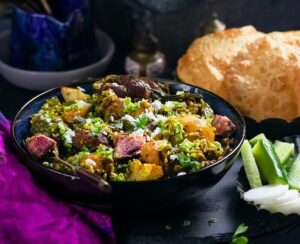
Preparation:
Undhiyu’s preparation is an art form in itself. The vegetables are delicately stuffed with a flavorful masala mix and slow-cooked to perfection. Traditionally, the dish is prepared in an earthen pot (matlu) buried underground, infusing it with an earthy aroma and a depth of flavors.
Serving Style:
Undhiyu is often served with accompaniments such as pooris, rotis, or puris, enhancing the overall dining experience. The dish is garnished with fresh coriander leaves and a generous squeeze of lime, balancing the richness with a hint of freshness.
Conclusion:
Undhiyu is not just a dish; it’s a symphony of flavors, a reflection of seasonality, and a cultural tradition that brings people together. As you savor each bite of this hearty Gujarati delight, you embark on a journey through the traditions and tastes that make Undhiyu a cherished part of the region’s culinary heritage.
5. Fafda-Jalebi – The Dream Cheat Day Breakfast!
Fafda: The Crispy Marvel
Ingredients:
Fafda is a crunchy, deep-fried snack made from gram flour (besan), seasoned with a mix of spices such as carom seeds, black pepper, and baking soda. The dough is rolled into thin strips, intricately twisted, and then fried until golden brown.
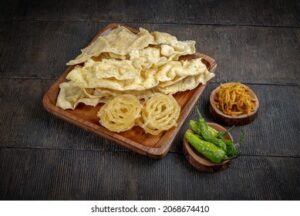
Serving Style:
Served hot and fresh, Fafda is often accompanied by green chutney, tangy tamarind sauce, or a dollop of yogurt. It is a popular breakfast item and a must-have during the festival of Dussehra in Gujarat.
Jalebi: The Sweet Swirl
Ingredients:
Jalebi, the sweet counterpart to Fafda, is made from fermented batter, typically consisting of all-purpose flour (maida), yogurt, and saffron. The batter is piped into spiral shapes and deep-fried until golden. These crispy spirals are then soaked in sugar syrup, infusing them with sweetness.
Serving Style:
Served warm, Jalebi is a visual delight with its vibrant orange hue. It complements Fafda perfectly, creating a delightful balance of textures and flavors. The twirls of Jalebi are often enjoyed on their own or with a side of rabri (sweetened condensed milk).
Conclusion:
Fafda-Jalebi is a culinary dance of contrasts – the crispiness of Fafda meeting the syrupy sweetness of Jalebi. As you indulge in this classic duo, you’re not just savoring flavors; you’re partaking in a cultural tradition that has been passed down through generations, encapsulating the heart and soul of Gujarati cuisine.
6. Ghari – A Sweet Symphony from Surat
Ingredients:
Ghari is crafted from a luxurious blend of clarified butter (ghee), mawa (reduced milk), sugar, and all-purpose flour. The key to its distinct flavor lies in the generous use of cardamom and nutmeg, creating a symphony of aromas that permeates every bite.

Preparation:
The process of making Ghari is a labor of love. The dough is meticulously prepared, layered with mawa, and then folded into a unique square or circular shape. The pastry is then baked to perfection, resulting in layers of flaky goodness.
Varieties:
Ghari comes in various flavors and fillings, each offering a delightful twist to the classic. Popular variations include Badam Pista Ghari, Kesar Ghari, and Malai Ghari, showcasing the versatility of this sweet treat.
Serving Style:
Ghari is often enjoyed during festive occasions, weddings, and as a gesture of celebration. It is cut into slices or wedges, revealing its intricate layers and rich filling. The sweet is best savored with a cup of masala chai, allowing the flavors to dance on the palate.
Conclusion:
In every layer of Ghari, one can taste the centuries-old tradition of Surat’s culinary craftsmanship. As this sweet delight graces tables and celebrations, it not only satisfies the sweet tooth but also narrates a story of cultural richness, hospitality, and the indomitable spirit of Surat.
7. Khakhra – A non-fried crispy wonder!
Ingredients:
Crafted from a simple mix of whole wheat flour, water, and a touch of salt, Khakhra is a testament to the beauty of simplicity. Various flavors are introduced through the addition of spices like cumin, ajwain (carom seeds), or sesame seeds, enhancing its taste profile.
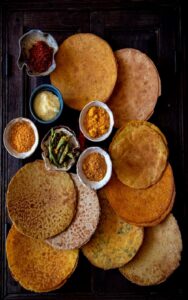
Preparation:
The magic of Khakhra lies in the delicate art of rolling and roasting. Small balls of dough are rolled out into thin discs, ensuring an even thickness. These discs are then roasted on a hot griddle or tava until they transform into golden, crunchy circles.
Flavor Varieties:
Khakhra comes in a delightful array of flavors to suit diverse palates. From masala and jeera (cumin) to pav bhaji and pani puri, the variations showcase the creativity and adaptability of this snack.
Serving Style:
Khakhra is a versatile snack that can be enjoyed on its own or with accompaniments. It pairs exceptionally well with chutneys, pickles, or yogurt. Some even use it as a base for chaat or add it to their lunchboxes for a wholesome crunch.
Conclusion:
Khakhra is not just a snack; it’s a cultural symbol of Gujarat’s culinary ingenuity. As you savor the crunch of this thin flatbread, you’re not just enjoying a treat; you’re partaking in a tradition that has stood the test of time, bringing people together over the simple joy of good food.
8. Gujarati Kadhi – A Comforting Yogurt-based Delight
Ingredients:
The key ingredients for Gujarati Kadhi include yogurt, besan, water, and an array of spices such as cumin, mustard seeds, fenugreek seeds, turmeric, and green chilies. The addition of ginger and curry leaves adds depth to the dish, creating a harmonious balance of flavors.

Preparation:
The preparation of Gujarati Kadhi involves whisking together yogurt and besan to form a smooth consistency. This mixture is then slowly cooked with spices, creating a velvety texture. The tempering of mustard seeds, cumin seeds, and curry leaves adds a final aromatic touch.
Serving Style:
Gujarati Kadhi is often served with steamed rice or khichdi, making it a wholesome and fulfilling meal. The soothing nature of the yogurt base complements the spiciness of the tempering, creating a delightful contrast that is both refreshing and satisfying.
Accompaniments:
The simplicity of Gujarati Kadhi makes it a versatile dish that pairs well with various sides. It is commonly served with roti or chapatti, and some variations may include the addition of pakoras (gram flour fritters) for added texture.
Conclusion:
Gujarati Kadhi is more than just a dish; it’s a representation of the simplicity and warmth that defines Gujarati cuisine. With its harmonious blend of tangy, spicy, and soothing elements, this comfort food has found a special place in the hearts and kitchens of those who appreciate the flavors of Gujarat.
9. Mohanthal – The Sweet Jewel of Gujarati Desserts
Ingredients:
Mohanthal is crafted from besan, ghee, sugar, milk, and a generous touch of cardamom. The addition of chopped nuts such as almonds and pistachios contributes to both the flavor and the visual appeal of this sweet treat.
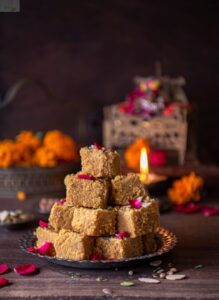
Preparation:
The preparation of Mohanthal involves roasting besan in ghee until it reaches a golden brown hue, releasing its nutty aroma. This mixture is then combined with a sugar syrup, creating a dense, fudgy texture. The final touch of cardamom adds a fragrant note, completing the symphony of flavors.
Decorative Traditions:
Mohanthal is often adorned with a sprinkle of chopped nuts on top, not only enhancing its visual appeal but also adding a delightful crunch. The square or diamond-shaped pieces are a testament to the intricate artistry that goes into crafting this traditional sweet.
Serving Style:
Mohanthal is traditionally served during festivals, weddings, and special occasions. The small, dense pieces are perfect for sharing and symbolize the joy and sweetness of celebratory moments.
Conclusion:
In each bite of Mohanthal, one tastes the essence of Gujarat – a symphony of besan, ghee, and the sweetness of tradition. As this sweet treat graces festive platters, it not only satisfies the sweet tooth but also narrates a story of cultural richness, familial bonds, and the enduring love for time-honored flavors.
10. Sev Tamatar Sabji – A Gujarati Delight of Tomatoes and Crispy Sev
Ingredients:
The primary ingredients for Sev Tamatar Sabji include ripe tomatoes, sev, and a blend of spices. The tempering is typically done with mustard seeds, cumin seeds, asafoetida, and curry leaves. Common spices include turmeric, red chili powder, and coriander powder.

Preparation:
The preparation begins with tempering the mustard seeds, cumin seeds, asafoetida, and curry leaves in hot oil, infusing it with aromatic flavours. Chopped tomatoes are then added and cooked until they form a luscious and tangy gravy. The spice blend is introduced to create a well-rounded flavour. Just before serving, sev is added to maintain its crispiness.
Texture and Flavour Profile:
Sev Tamatar Sabji offers a delightful mix of textures and flavours. The tomatoes contribute to a savory and slightly tangy gravy, while the sev adds a satisfying crunch to the dish. The combination of spices creates a harmonious flavour profile, making it a delicious and comforting curry.
Serving Style:
This dish is typically served with Indian flatbreads like chapatti or puri. The sev is added just before serving to ensure it retains its crisp texture. Garnished with fresh coriander leaves, it not only enhances the visual appeal but also adds a hint of freshness to the dish.
Conclusion:
Sev Tamatar Sabji embodies the essence of home-cooked Indian meals—fast, flavourful, and satisfying. As you savour the tangy tomatoes and crispy sev, you experience the comforting and diverse flavours that make Indian cuisine a perennial favourite.


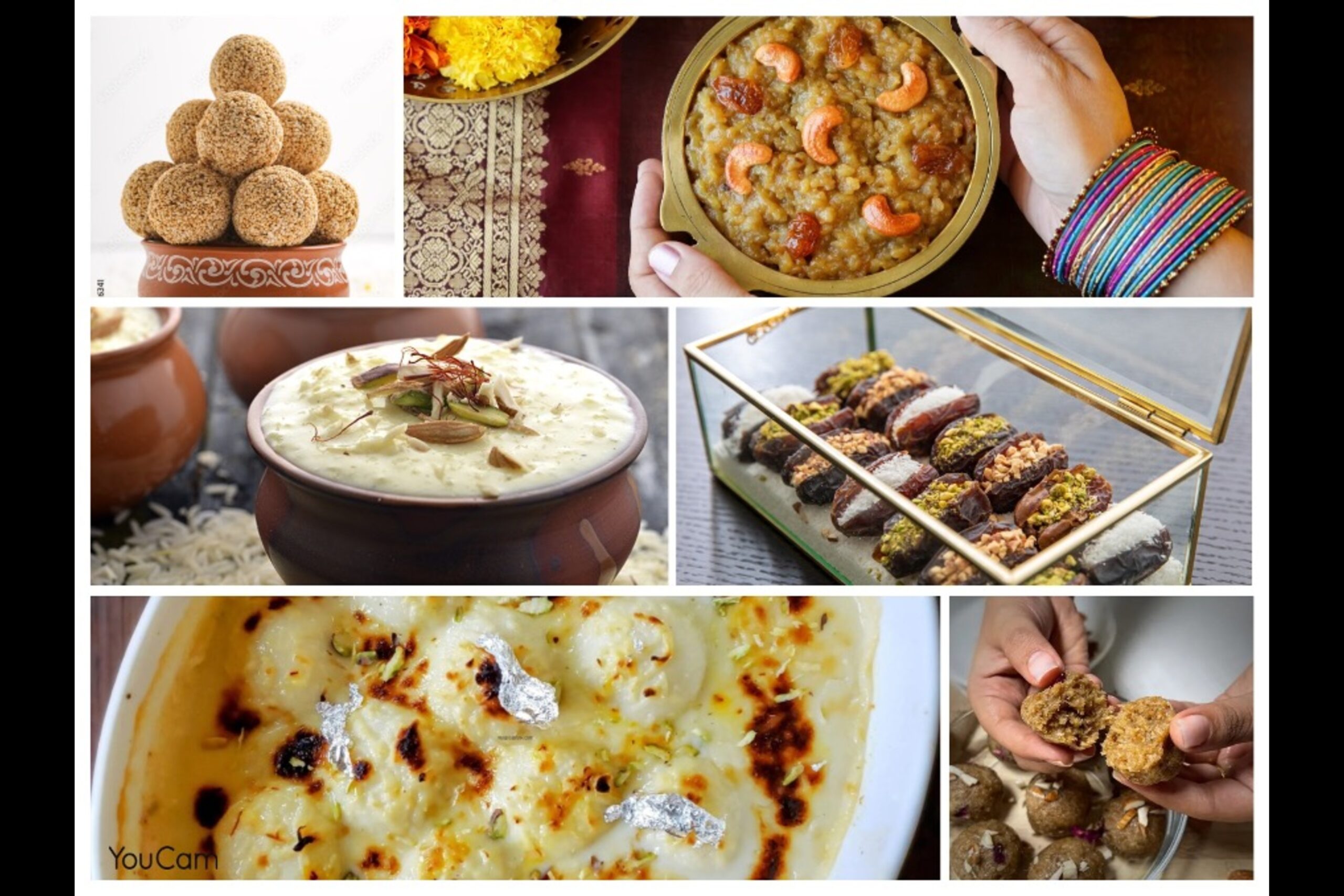
Average Rating